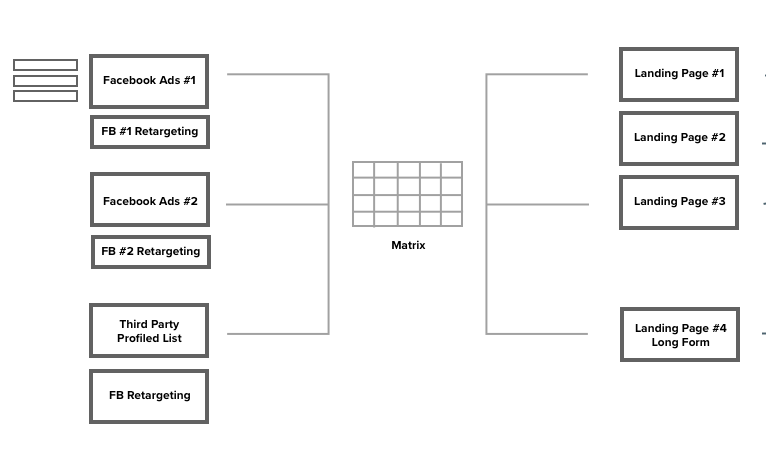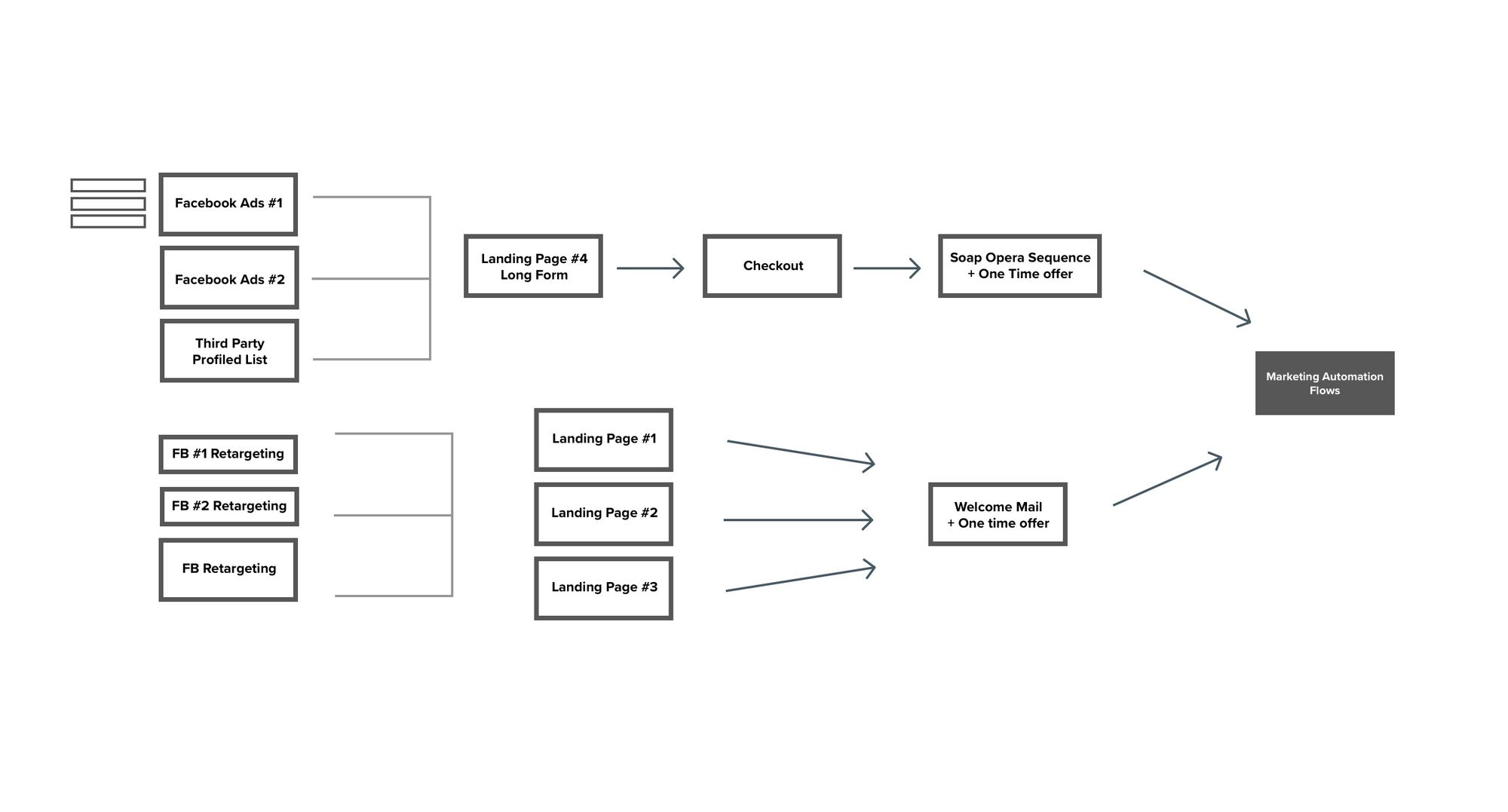
The Problem
I worked in 2014 (it seems so much time has passed since then) on Primo Taglio, an Amodio Group spinoff company. Unfortunately, some of that automation schemes and some other stuff, were lost over time but I remember well the activities I carried out: the Client has been working for many years with enterprise companies e-commerce focussed and some perforamance marketing agencies.
Because of some sales issues and failures, when I went in the company to propose my activities, the attention on what I was showing them was high, because it seems to be something never seen!
Their Customer Base was partially saturated, due to wrong mangement due to cyclical newsletters on a very long period, with approximately the same communications, in value terms (which, I found pretty much often in many other enterprise companies).
Contents and offers delivered in the weekley newsletter, were "one sized for all" – no customer segmentation or tag filtering. The obvious consequence was an high unsubscription rate, and a low CTR (Click Through Rate) and Open Rate.
In this situation must do something different of bringing targeted traffic for refreshing customer base, because only new customers and sales are enough to grow up a slowing business.
The Challenge
Working in a company I founded few years before, I was lucky to manage and grow a team I had trained over the time. They helped me to execute all tactics derived from the strategy.
Once I analyzed their customer base through RFM analysis and audience browsing behaviors, the next step was to create an acquisition strategy, on one hand and increase the Lifetime Value (LTV) on the other.
The acquisition has been thought and structured on different customer' clusters keeping as primary objective acquiring their emails at least, and after push them down into the funnel, in a very short time, transforming them into a paying customers.
From purchasing history analysis, I noticed that after the first order for products tasting, they are inclined for a cyclical purchase, due to their excellent production and product quality.
So, I started taking notes of this behaviours and create some marketing automation flows for uplifting LTV, based on cyclical product consumption (I remember on average 3/7 days, it depends on products numbers in their order).
Below, I will tell only the method applied to 1 segment (Frequent Buyers) out of 11 of the customer base that I analyzed and operated.
Quantitative analysis, especially in the first phase of work, is really hard point to take home due to its fractionated information and all divided in silos. If I should made a mistake at this phase, the strategy was completely wrong! All marketing actions and communications created could be wrong because not well targeted. The real risk it was to burn completely their customer database permanently.
The other side of the coin, which very often is not taken into consideration, is the data qualitative aspect: recorded customer navigation, responses to surveys, analysis of the most common keywords used in live chat with customer care (both to describe their doubts in the pre-purchase phase and in the following ones).
It was a gold mine because make me able to understand better what their customers want and their frictions during purchasing process. In some internal brainstorming, with my team, we have listed important considerations that I had brought to the meeting. For example, an important data-driven consideration was about the different tone of voice (and the works not to be used) on a segmentated audience because of evidenced frictions.
Acquisition strategy
Once I completed customer base analysis, I crafted this following strategy, that I shown partially below illustrated, using a simple diagram.

Based on consistently demographic data, in the database, I extracted all emails related to Frequent Buyers segment (to create Facebook Ads #1 - LAL Audience #1).
Using all generated data from guests, I created a new audience, in the following way, to have a wider acquisition on Facebook Ads #2:
- I extracted data such as: AOV ranges, age, sex, geolocation, etc;
- I created a LAL audience on Facebook Ads adding interests.
PRO TIP: you can create custom segments, if Google Analytics allows it due to data sampling issues, to be used in Google Ad-Words for acquiring new targeted customers.
Thanks to third-party suppliers it was sent different mail marketing campaigns over a cold audience list, delivering several promo offers and timed discounts.
The advertising message, delivered through the different channels (Facebook and DEM) was completely different, because it involved different kind of people and different funnel stage.
Being a Frequent Buyer audience, I knew the most purchased products and we promoted (through retargeting) timed discounts and promotions to the 3 different landing pages.
The new audience had landed on the Long Form, as first touchpoint, warming them up through a company storytelling showing their values and the goodness of the dairy products: they were crafted using an industrial process but respecting the tradition in the different production steps.

The New Audience
Summarizing:
- Facebook Ads #1 - new LAL (Lookalike Audience) from emails taken from frequent buyer segment, as described above.
- Facebook Ads #2 - new LAL made up by demographic, purchasing and their interests information.
PRO TIP – For real the LAL #1 audience was created fractioning by pricing tiers, to convey an offer more targeted.

The Matrix
Thanks to this tactics and remarketing, using a similar matrix shown below, I maximized acquisition investments with a lower CAC (cost per acquisition) than 1/4 of the initial one.
| Landing #1 | Landing #2 | Landing #3 | Landing #4 | |
|---|---|---|---|---|
| LAL #1 + RM | x | x | ||
| LAL #2 + RM | x | |||
| Prof.L.+ RM #3 | x | x |
The X inside the cells are the winning variants. In the real matrix, there are retargeting rows too and all the fields are filled out their relative conversion rate (for obvious NDA reason aren't being published).
The third party audience coming from performance suppliers landed on Long Form, with a bounce rate and average time, quite interesting. If no purchase was made directly from that page, some of those that reached a specific threshold, were retargeted and driven to the other landing pages, with an higher impact in promotion terms.
In qualitative analysis phase, I found some frictions (understandable) in buying food products online. Not being able to see, touch and smell dairy products, it was not a frequent experience to which Italians are used to do, during their daily buying process.
The real main goal was that to mitigate fears and skepticisms bringing them to a first purchase.

The Marketing Automation
As shown in the pic before, once a user be acquired through one of the 4 Landing Pages they were driven in a different Marketing Automation flows, based on different acquisition type (purchase or email contact).
Long Form – entering in a Soap Opera Sequence (SOS): it's a sales tactic based on an email sequence when they entered in a list, for the first time. They are called in this way because each email ends with a hook that connect them to the next "episode", just like a soap opera does.
In each email, I added products strictly linked to the "episode". Based on their clicks I hooked specific tags for understanding better their future preferences and take future actions (based on their future navigation too).
The SOS were the perfect tactic because they allowed us to create a perfect onboarding sequence for new customers, walking them in a virtual culinary itinerary, discovering Campania foods and their tradition.
Landing Page 1, 2, 3 – The goal here was getting their emails leveraging the product goodness through timed promotions for tasting.
I used, in several A/B testing, one of Cialdini's 7 rules for increasing conversion rate and acquire more users as I can.
Welcome Mail + One Time Offer: it's a simple email linear sequence automation based on 2 reminders timed on 1 day each others (if they hadn't purchased yet from the first mail, it sent the second one and then the others) pushing down, the customer, in the purchasing funnel stage.
In the post-purchase, they were put in different marketing automation flows structured on their behaviors, which calculate, on cascade, different Customer Scoring assignments.
Timed Offer
I crafted a timed offer, valid within N days since the last mail: I delivered to a sub segment few experiments in order to understand what was the best timed variant: the winning one was that based on 3 days. Consequently I was going to edit the relative landing page in order to implement the best solution.
When you're crafting an articulated strategy, it's good to count on senior professionals, and be a data maniacal organizator. If some information be lost could, they could invalidate ongoing experiments or got wrong conclusions.
One aspect to keep always in mind is that customer saturation level because using these type of tactics, with a lot of automations the overlaps it's really easily to get, with a consequent "communication flooding".
PRO TIP – Using products such as Active Campaign make you able to avoid automation flooding and overlaps. Mapping and drawing the Customer Journey based on different Personas could greatly avoid communication issues.

